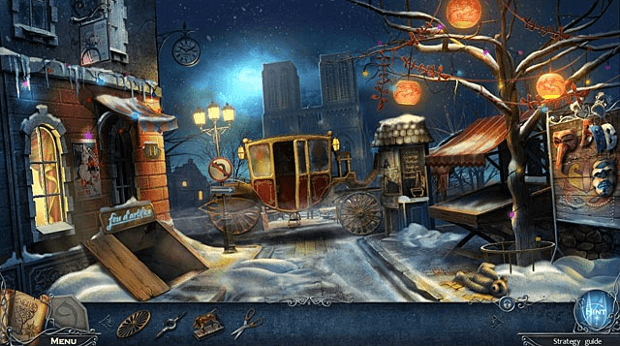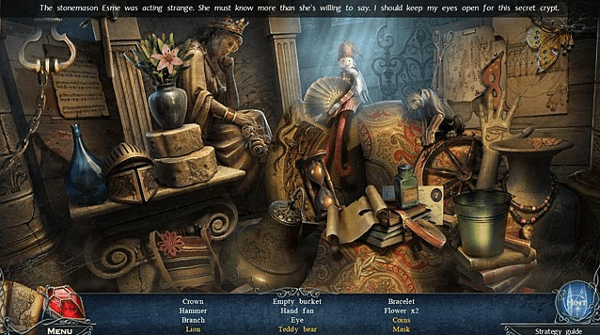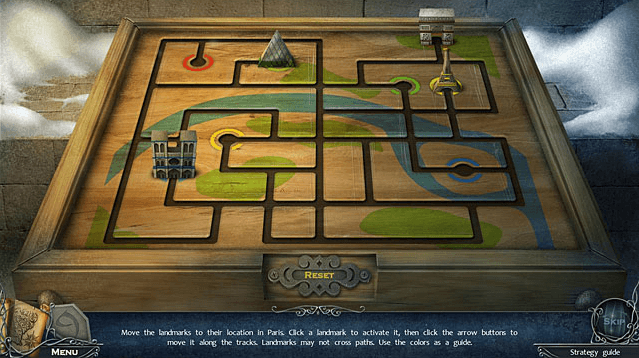- Wondering how to get Monopoly GO! free rolls? Well, you’ve come to the right place. In this guide, we provide you with a bunch of tips and tricks to get some free rolls for the hit new mobile game. We’ll …
Best Roblox Horror Games to Play Right Now – Updated Weekly
By Adele Wilson
Our Best Roblox Horror Games guide features the scariest and most creative experiences to play right now on the platform!The BEST Roblox Games of The Week – Games You Need To Play!
By Sho Roberts
Our feature shares our pick for the Best Roblox Games of the week! With our feature, we guarantee you'll find something new to play!Type Soul Clan Rarity Guide – All Legendary And Common Clans Listed!
By Nathan Ball
Wondering what your odds of rolling a particular Clan are? Wonder no more, with my handy Type Soul Clan Rarity guide.
9: The Dark Side Of Notre Dame Review
Have you noticed that hidden object adventures seem to keep getting bigger? The trend lately is to pull the player through as many outlandish locations as possible, which precludes the notion of making a tighter, more constrained game. 9: The Dark Side of Notre Dame ignores current trends by setting itself within and around Paris’s famed Notre Dame cathedral and relies—for both good and ill—on its reboot of a classic tale to provide what’s necessary for a great game.

Investigate the disappearance of a nobleman’s daughter at the Paris Festival of Fools.
Have you noticed that hidden object adventures seem to keep getting bigger? The trend lately is to pull the player through as many outlandish locations as possible, which precludes the notion of making a tighter, more constrained game. 9: The Dark Side of Notre Dame ignores current trends by setting itself within and around Paris’s famed Notre Dame cathedral and relies—for both good and ill—on its reboot of a classic tale to provide what’s necessary for a great game.
The game starts with you (a detective) being called in by the Paris police to look into the disappearance of a young girl. Apparently, during the historic Festival of Fools, the daughter of a nobleman was spirited away in front of a crowd of revelers, by the gargoyles of Notre Dame. The police are baffled by it and their leader, Inspector Charmant, calls you in (in secret—I guess the Paris police don’t enjoy openly admitting their incompetence) to check things out.
Early on in the investigation, you discover the stone gargoyles’ unexpected liveliness is related to the magic of a famous sapphire. Centuries before, the king found the powerful gem cut it in two to prevent its misuse; the pieces were then given to the leaders of the military and religious factions. Arkivus, the head honcho of the latter group, ended up with the corrupting half of the gem and quickly became an immortal, power-hungry maniac. Fortunately, the light side of the gem still exists and once you get your hands on it, you have the power to uncover black magic and to defeat Arkivus.
Th storyline doesn’t play out as simply as I’ve made it sound. It also entails a lot of mumbo jumbo about a stained glass window, the reunification of the sapphire, turning people into gargoyles, and a kind of bodysnatching-slash-reincarnation. Personally, I’m glad the game doesn’t attempt to retell Victor Hugo’s brilliant novel, The Hunchback of Notre Dame, but I do wish it told a story half as cohesive. Characters from the book appear here and there, but the story doesn’t really drive what you’re doing. What does is the knowledge that you’re supposed to enter a scene and pick stuff up, then use that stuff to open other stuff in order to, well, pick up more stuff.
It’s a failing of the genre that it often relies too heavily on the “find a key for this lock” formula and 9: The Dark Side of Notre Dame is very guilty of that approach. An hour in, I wasn’t really paying much attention to what anyone said to me; I just knew there were more things to unlock. This state of affairs isn’t entirely bad, and the game does deserve credit for some aspects.
First, I like the smaller context. It was refreshing, in a way, to not be dragged all over the world during the course of the story—and hey, no haunted manor house! Paris looks pretty good here and having seen the real Notre Dame, I thought the church was reasonably well-represented. Second, I like the accordion-tinged music. It definitely provides that “I’m in Paris” kind of feel. Third, I enjoy the helpful little side-kick you’re given (I won’t say more so I don’t spoil it for you). Fourth, fifth and sixth, I appreciate the fast travel map, the thoughtful hidden object scene triggers and the occasionally-interesting puzzles. Finally, I like the cutscenes, which show something more creative than repeated scenes of the villain cackling and jumping out of reach.
What doesn’t work for me are the few utterly confusing puzzles, the horrible voice acting and the general lack of polish. In several instances, puzzles present you with controls and instructions that just don’t make sense. You click all around, trying to discern some kind of identifiable cause-and-effect and there really is none. In two cases, I used the strategy guide to get through these troublesome things and even after seeing the solutions to them I was like, “Huh?”
What also doesn’t fly is the game’s voice acting which is some of the worst I’ve heard. The voice director must have told everyone to talk like Inspector Clouseau (that is, if Clouseau was drunk and doing an impression of Colonel Klink mixed with Count Dracula) because it’s really bad. Then again, perhaps the bad accents were meant to distract us from the more raggedy parts of the game, such as the mismatched voice/text lines (actors mispronounce “Quasi” as “Qais”), the weird moments of English translation, (“A sturdy cut of wood, these boards are.” What – is Yoda writing the dialog?) and the almost entirely missing mouth animation (it occurs once, at the end).
While the main game suffers from intermittent problems, the bonus chapter is a mess from beginning to end. It’s shorter than most, and promises to tell the story of Arkivus and explain his connection to Notre Dame and the sapphire. The reality is, it takes you back in time a couple hundred years (I’m not even sure who you’re supposed to be then) but doesn’t really give much new insight into the story. The fiction gets particularly thin here, and even more in evidence is the “go here and get that to unlock this” formula. The game’s other extras are equally as disappointing, consisting of the expected—but nevertheless uninspired—wallpapers, concept art, music, and strategy guide.
9: The Dark Side of Notre Dame feels like the kind of game that started as a good idea (“Let’s use Hunchback as a jumping off point for a story about a magical conspiracy!”) but that ultimately didn’t come together. There are some nice things in it, such as the music and the well-triggered hidden object scenes, but for a finished game (especially a Collector’s Edition) it just has too many rough edges.

The good

The bad
More articles...
Monopoly GO! Free Rolls – Links For Free Dice
By Glen Fox
Wondering how to get Monopoly GO! free rolls? Well, you’ve come to the right place. In this guide, we provide you with a bunch of tips and tricks to get some free rolls for the hit new mobile game. We’ll …Best Roblox Horror Games to Play Right Now – Updated Weekly
By Adele Wilson
Our Best Roblox Horror Games guide features the scariest and most creative experiences to play right now on the platform!The BEST Roblox Games of The Week – Games You Need To Play!
By Sho Roberts
Our feature shares our pick for the Best Roblox Games of the week! With our feature, we guarantee you'll find something new to play!Type Soul Clan Rarity Guide – All Legendary And Common Clans Listed!
By Nathan Ball
Wondering what your odds of rolling a particular Clan are? Wonder no more, with my handy Type Soul Clan Rarity guide.








 “
“ “
“